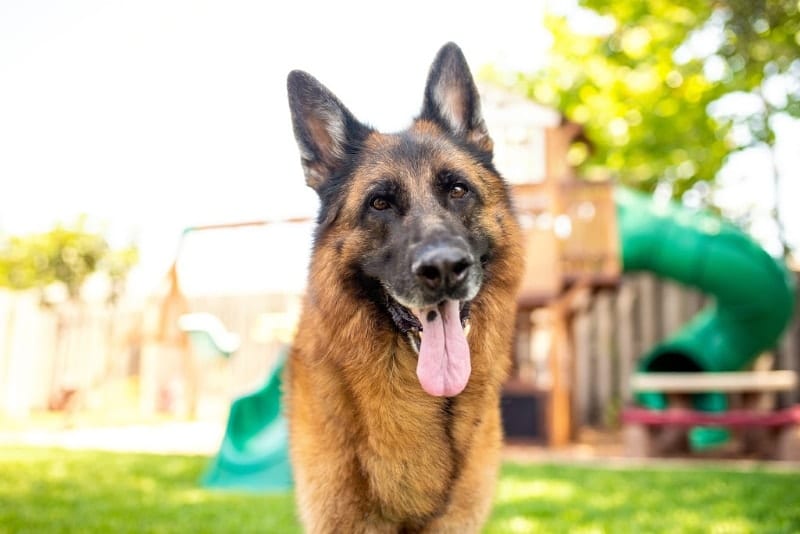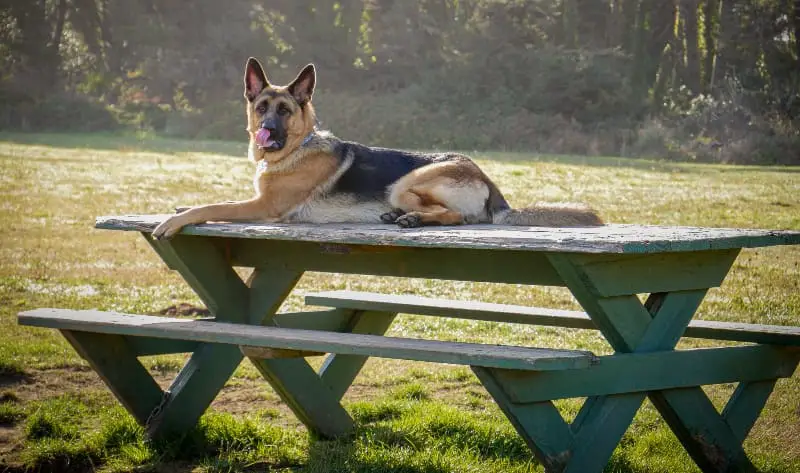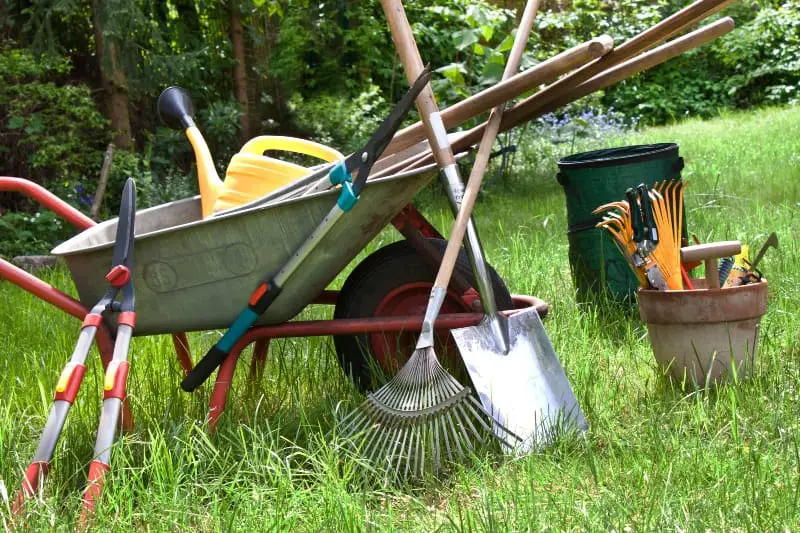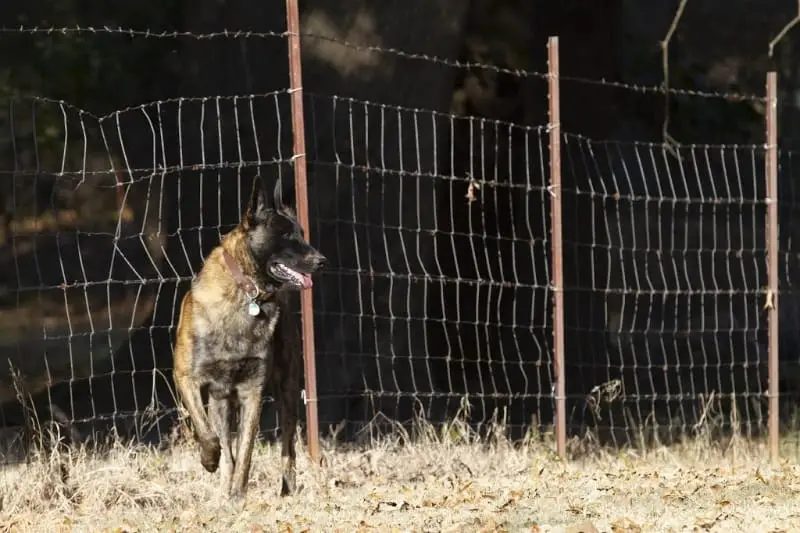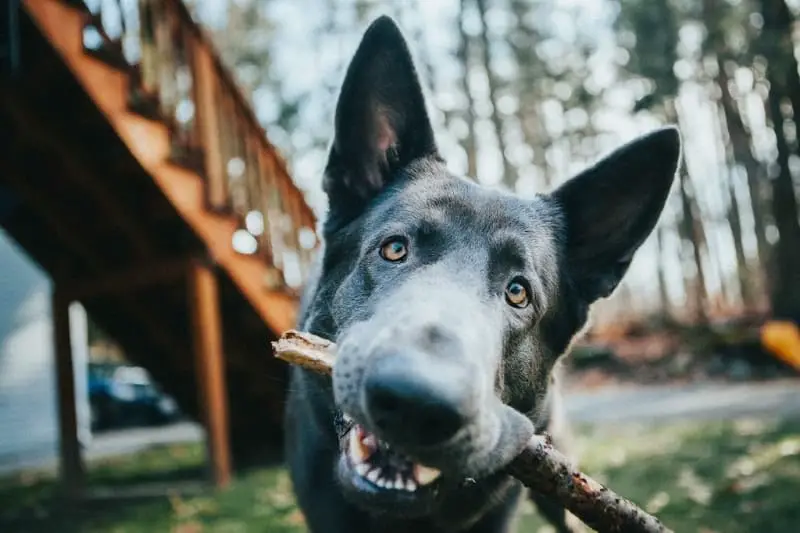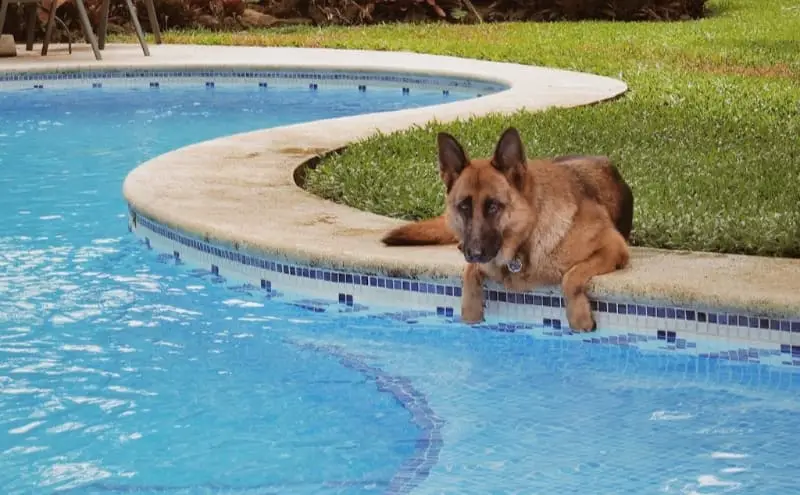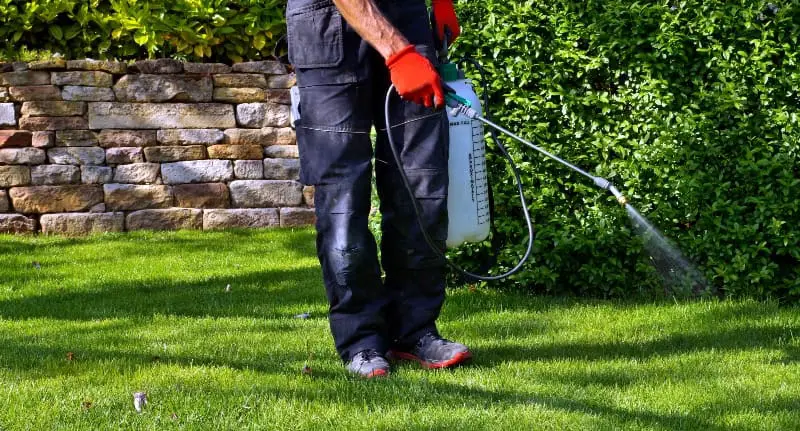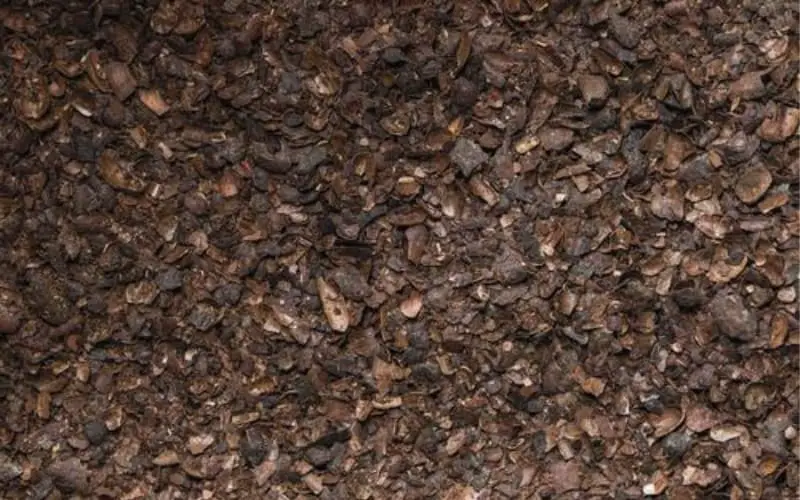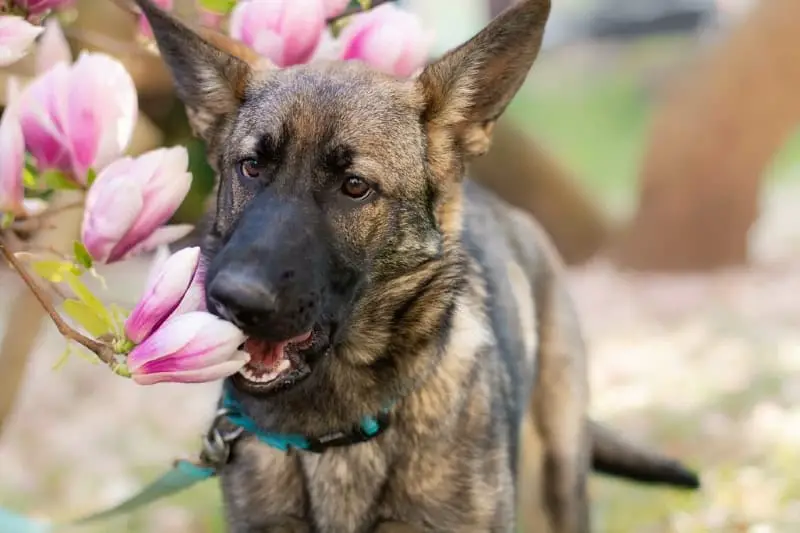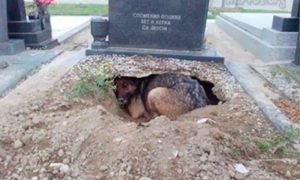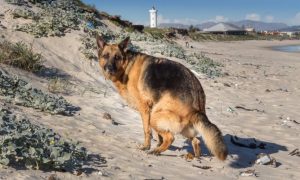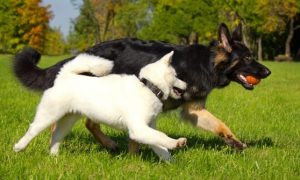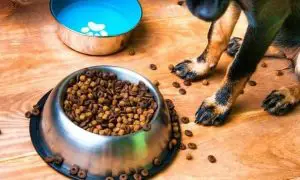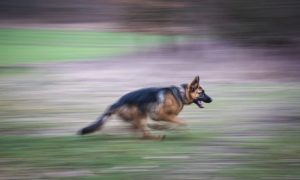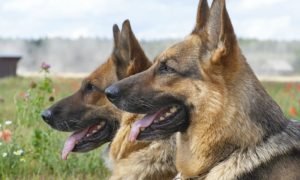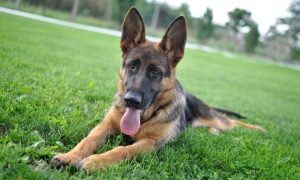Yards are outdoor personal sanctuaries for many. A place to test your green thumb, enjoy meals, soak up the sun, and let your dog roam.
Many items in your backyard pose no threat when stored or used correctly, but other items can be dangerous and even poisonous for your dog.
To ensure your dog’s safety, you should do a critical sweep of your yard and the items in it.
Below are potential backyard hazards you need to be aware of to keep your dog safe.
1. Patio Furniture
Patio furniture is standard in backyards. Whether your yard is spacious or small, dogs tend to hang out where their humans are, which is usually where the patio furniture is.
Patio furniture should be sturdy for the safety of your dog.
Lightweight chairs can tip over during rambunctious play or gusts of wind.
Lightweight tables can tip or collapse when a big dog places their front paws on it looking to help themselves to a bite of your steak or burger.
Glass tables can shatter during extreme hot or cold weather, which could cause cuts and abrasions on dog paws. Tempered glass is a safer option or choose tables with aluminum or wood tops.
2. Yard Tools
Rakes, shovels, and any other item with a point is a hazard for your dog. When tools are not in use, keep them stored away from your dog.
3. Barbeque
There’s nothing like cooking burgers on the barbeque or roasting hot dogs over a fire pit in your backyard.
The savory smells on the grill or the warmth from a fire pit are potential hazards for your dog. Never leave your dog unsupervised around a fire.
Keep your dog at a safe distance from the grill and no running near the fire pit.
4. Fencing
Fencing establishes boundaries of your property and helps keep your dog contained.
Fences are exposed to the elements and should not be overlooked when doing yard maintenance. A well-maintained fence will assist in your dog’s safety.
For dogs who continuously run a specific area of fenceline or who are escape artists, it is essential to inspect for vulnerabilities in your fence regularly.
Chain link or iron fences should be checked to ensure brackets, clamps and screws are tight, and there are no sharp edges that could puncture skin, paws, or eyes.
Wood fences should be checked to ensure there are no loose slats or wobbly panels. Also, check for splintering and make replacements as needed.
Last but not least, don’t forget to check your gates. Brackets and locking mechanisms need to be secure and working correctly to keep unwanted visitors out and your dog in.
5. Sticks
Dogs and sticks go together like peanut butter and jelly. A lot of dogs are naturally obsessed with sticks.
As an owner, you need to be aware of the potential risks, and injuries sticks pose to your dog.
Dogs chew sticks, and swallowing a chewed stick is a choking hazard. Swallowed sticks can cause injury to vital organs or obstruction, requiring an expensive trip to the vet.
If your yard has trees, keeping sticks picked-up on a regular basis eliminates your dog’s temptation to play with them and chew them.
6. Water
Drinking water is good. Lakes, ponds, or pools can be bad.
Lakes and ponds can contain algae and contaminated water that is dangerous for humans and dogs.
Pools contain chlorine. The amount of chlorine in a pool isn’t harmful to a dog, but just be sure to store your pool chemicals safely.
The biggest danger with a body of water in your yard is drowning. Even if your dog is a good swimmer, you should restrict their access when unsupervised.
7. The Weather
Depending on where you live and what time of year it is, the weather can get extremely hot or extremely cold. Both can be fatal to dogs.
Do not leave your dog outdoors during extreme weather for long periods.
Rising temperatures can cause heatstroke and heat exhaustion. Just like humans, dogs can get sunburned and get skin cancer.
Be sure your dog has access to fresh water and shade on hot summer days.
Frigid cold weather is just as dangerous to dogs as hot weather. Cold weather can cause frostbite and hypothermia in dogs left out in the elements. Some breeds tolerate cold weather better than others, and shelter can help, but if it’s too cold outside for you, it’s too cold for your dog.
8. Herbicides, Insecticides, and Pesticides
Herbicides, insecticides, and pesticides work wonders at keeping your yard free of unwanted weeds and insects, but they are not safe for dogs.
Herbicides, insecticides, and pesticides are irritants to dogs and can be poisonous if ingested.
Good dog owners keep dangerous chemicals in a secure area that their dog doesn’t have access to.
However, a treated yard your dog has immediate access to exposes them to the chemicals. If your dog licks their paws or other areas that made contact with the chemicals, they have now ingested harmful ingredients.
Herbicide, insecticide, and pesticide exposure symptoms range from mild to deadly. The symptoms are the same for humans and dogs and include skin rashes, fever, nausea, vomiting, diarrhea, eye irritations, seizures, respiratory problems, and respiratory failure.
Studies have linked herbicides to lymphatic cancer in dogs, and chemicals increase a dog’s risk of bladder cancer.
Restrict your dog off of a chemically treated area for at least 48 hours and when in doubt rinse paws or other regions with water and a non-irritant soap or shampoo.
If your dog has ingested a toxic chemical, do not risk your dog’s health. Contact poison control or your veterinarian immediately.
9. Fertilizers
Fertilizers help lawns and plants grow but pose health dangers to your dog due to the ingredients nitrogen, phosphorus, and potassium.
Nitrogen can burn paws, and ingesting fertilizer is not fatal for a dog, but it will cause an upset stomach followed by vomiting and diarrhea.
Fertilizers deemed as organic seem like a safe option for dog owners. Organic fertilizers are indeed “safer” than regular fertilizers but still have ingredients that could pose a potential health risk.
Do some research on organic fertilizers or just play it safe by restricting your dog from a treated lawn for 24 hours.
10. Compost Bin
Composting eliminates the need to buy fertilizer, but it doesn’t eliminate the need to keep your dog away from it.
A compost pile consists of decaying, decomposing, and moldy food that can contain tremorgenic mycotoxins. Tremorgenic mycotoxins are harmful to dogs, pets, and wildlife.
Fence off your compost bin and keep it locked to protect your dog and other curious animals in your area.
11. Cocoa Mulch
Cocoa mulch is known for its pleasant smell and popular curb appeal, but dog owners should avoid this mulch due to the toxic ingredient theobromine.
The odor from cocoa mulch attracts dogs and tempts them to eat it.
In 2003 the ASPCA Animal Poison Control Center issued the following warning,
“Eaten by a 50-pound dog, about 2 ounces of cocoa bean mulch may cause gastrointestinal upset; about 4.5 ounces, increased heart rate; about 5.3 ounces, seizures; and over 9 ounces, death. (In contrast, a 50-pound dog can eat up to about 7.5 ounces of milk chocolate without gastrointestinal upset and up to about a pound of milk chocolate without increased heart rate.)”
Other mulch options are not as dangerous as Cocoa mulch but can still pose a choking threat or an allergic reaction.
12. Flowers and Gardens
Some people love to plant flowers, and some dogs love to dig them up.
Before you replace a destroyed flower bed or start planning a new landscape project, you need to be aware of which plants and flowers are toxic to dogs. The health dangers range from minor side effects to major life-threatening issues.
The list is a long one you can check out here courtesy of the ASPCA.
Are you growing fresh foods in a garden? Check the above list for fruit and vegetable plants that are harmless to humans but dangerous to dogs.
13. Mushrooms
You may not be growing mushrooms, but that won’t stop them from sprouting in your yard or property. There are many varieties of mushrooms, and some are more toxic to dogs than others. Caution on the side of safety by digging up mushrooms and watching for new ones to pop up.
Keeping your yard safe and secure will provide a worry-free oasis for you and your dog.

